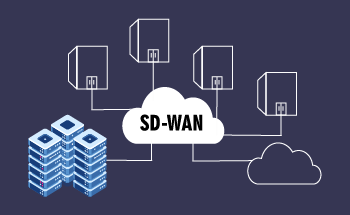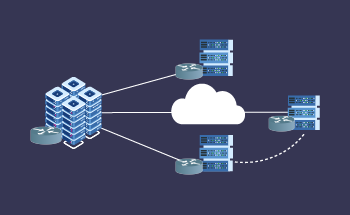Demystifying Data Lakes vs. Big Data
09:59, 27.02.2024
If you work with data in any shape or form, the term “data lake” should be familiar to you. In the modern world, where information is overflowing, a data lake is a storage solution for organizations that have outgrown their data infrastructure.
In short, a data lake is a repository that can store infinite data. But let’s dive deeper into how data lakes are used, how they differ from data warehouses, and the benefits of using a data lake for your organization.
Understanding the Concept of a Data Lake
Data lakes imply a storage repository that can support large amounts of data in its primal format, meaning it’s being unprocessed.
To what we now call data lakes preceded the so-called “watering holes” that could accept any data format and store them all together. However, they quickly turned out to be chaotic and poorly managed holes for data dumping. The main challenge with these early versions of data lakes was the incorrectly configured navigation. Modern data lakes solve this problem by using metadata tags to make data easier to find.
After the initial hype, data lakes were no longer considered data platforms; instead, they were thought to be places where various data could coexist, like metaphorical containers.
Businesses commonly use data lakes for faster reaction to newer information and advanced data monitoring and analysis. Data lakes are the most widespread source for machine learning, for instance. It signifies that data lakes provide the necessary diversity of data.
Simplifying Data Lakes
In simple terms, data lakes are massive storage systems where one can store various data formats simultaneously without the conversion or organization needed; this means that no schemas are placed within the data lakes. You can “throw” anything in the data “lake”, and it will be accepted.
But don’t be fooled into thinking that data lakes equal “data swamps”. For data lakes to function properly, they need management, cleansing, and integration at the very least.
Nowadays, data lakes are a big part of data analysis and the management strategies it produces. Data lakes can be considered a training ground for data analysis that allows finding data interconnections where they seemingly aren’t. A result of all that thought process is valuable insights that will enable businesses to make more informed decisions.
Exploring the Advantages of Utilizing a Data Lake
The main advantage associated with data lakes is that they can store different types of data to contribute to practices like data analysis and business decision-making based on it.
However, there are many other advantages worth mentioning.
Operational Efficiencies
Data lakes are designed to store diverse data, from structured (databases) to unstructured (social media posts or images) data. Moreover, it provides access to data across the business infrastructure. With data lakes, you can adapt to increasing data volumes without slowing down performance. Different departments can collaborate through simplified data integration while staying in their lane; data lakes eliminate the need to make frequent changes in the business architecture.
Data lakes simplify the whole management experience since there’s no need to worry about how structured your data is due to their ability to store data of any format simultaneously.
Customer Relationships
The information that data lakes store can offer valuable insights that can help in creating or modifying business strategies.
With that, data lakes can host various customer data, including feedback, interaction with social media content, etc. Research into customer behavioral patterns can give you foundational knowledge for improving customer experience and making it more customized.
Data lakes can also help with recognizing trends and making predictions for businesses.
Distinguishing Between a Data Lake and a Data Warehouse
A data warehouse is also a repository for business data. However, unlike data lakes, data warehouses accept only highly structured data. Like the real-life warehouse, the contents are processed, sorted, categorized into specific sections, and stored.
Examples of information stored in data warehouses can include a database, analysis tools for visualizing and presenting to business users, statistical records, reports, etc.
Data warehouses are suitable for more structured, almost chronological research, while data lakes are mainly used for more holistic monitoring and analysis. However, there are more differences between data lakes and data warehouses.
| Parameters | Data lakes | Data warehouses |
| Data type | All types of raw data no matter the format or source | Structured and processed data stored according to specific parameters |
| Data purpose | To be determined | Preliminary determined |
| Schema | No predefined schemas for ease of use | Existing predefined schemas for data security and increased performance |
| Users | Data scientists and researches | Business professionals |
| Accessibility | Upgradable; easy to make changes | Difficult to make changes |
| Overall purpose | Storing big amounts of data for data analysis | On-demand data display following specific criteria |
Typical Scenarios for Implementing Data Lakes
Data lakes can be used in many ways. However, we will mention the most common.
Data Integration and Hub Management
Data lakes can store large amounts of data of different origins. That means that for businesses data lakes allow the full scope of business data across various departments to be observed. This aspect also applies to scientists, who benefit from having all data in a single repository.
Empowering Advanced Analytics and AI
Through having all of your data in one place, you can engage in data analytics, predictive analytics, machine learning, anomaly detection, etc. You can also utilize AI to help you extract insights from an extensive data collection. AI tools can be used for real-time monitoring and analysis as well.
Enabling Data Exploration and Discovery
Data lakes are a powerful tool for scientists and researchers to explore raw, unstructured data, perform analysis, and gather insights.
Businesses can also harness considerable amounts of data stored at data lakes. Through performing predictive analytics, comprehending current and past data, and observing the existing tendencies, businesses can forecast certain events and patterns and make the according strategy optimisation.
Efficient Data Archiving
Data lakes can be used as affordable and durable storage solutions for archiving historical data that can be useful for future research. The significant advantage of data lakes when it comes to archiving is that you don’t need to filter or structure your data before adding it to the storage.
Storage and Analysis of IoT Data
Data lakes can handle significant data streams from smart devices, offering a place for data storage. In turn, the collected data can highlight specific patterns that can provide valuable insights for the decision-making process. For example, city planners can use traffic light system data to manage congestion better.
Industry-Specific Use Cases of Data Lakes
Data lakes can find their application in various industries and markets. Here are just some of them.
Oil and gas industry
On average, one oil and gas company produces 1.5 terabytes of IoT data daily that needs to be stored somewhere. Data lakes become a storage solution for enterprise-level companies. Moreover, historical data that data lakes hold can provide optimization insights to better drilling technologies, improve safety infrastructure, minimize downtime, and stay compliant with regulatory requirements.
Cybersecurity
Cybersecurity practices are always under active optimization, since cyber attacks are the major challenge some companies cannot handle. Even though data lakes cannot offer revolutionary security measures, they can provide a safe space for storing large amounts of data. Since backup is a big part of cybersecurity, companies need storage that can handle enormous data amounts.
Marketing
When it comes to marketing, its practices always produce large data volumes. But what’s important in marketing is analytics. Data lakes allow viewing all the raw and unstructured data in one place, which can highlight patterns, tendencies, and trends used for the optimization of marketing strategy. Real-time data monitoring and analysis are also possible with data lakes. It’s specifically applicable when marketers deal with the streaming sector and must make decisions almost “as they go.”
To Sum Up
Data lakes are considered a modern solution for storing considerable amounts of data. Data lakes are characterized by cost-effectiveness, flexibility, and accessibility. They provide advanced analytical capabilities and allow the subtracting of valuable insights for businesses.
Leading companies are already using data lakes to their advantage. For people in business and decision-making positions, data lakes offer a strategic gateway toward more thorough and thought-through business strategies.


